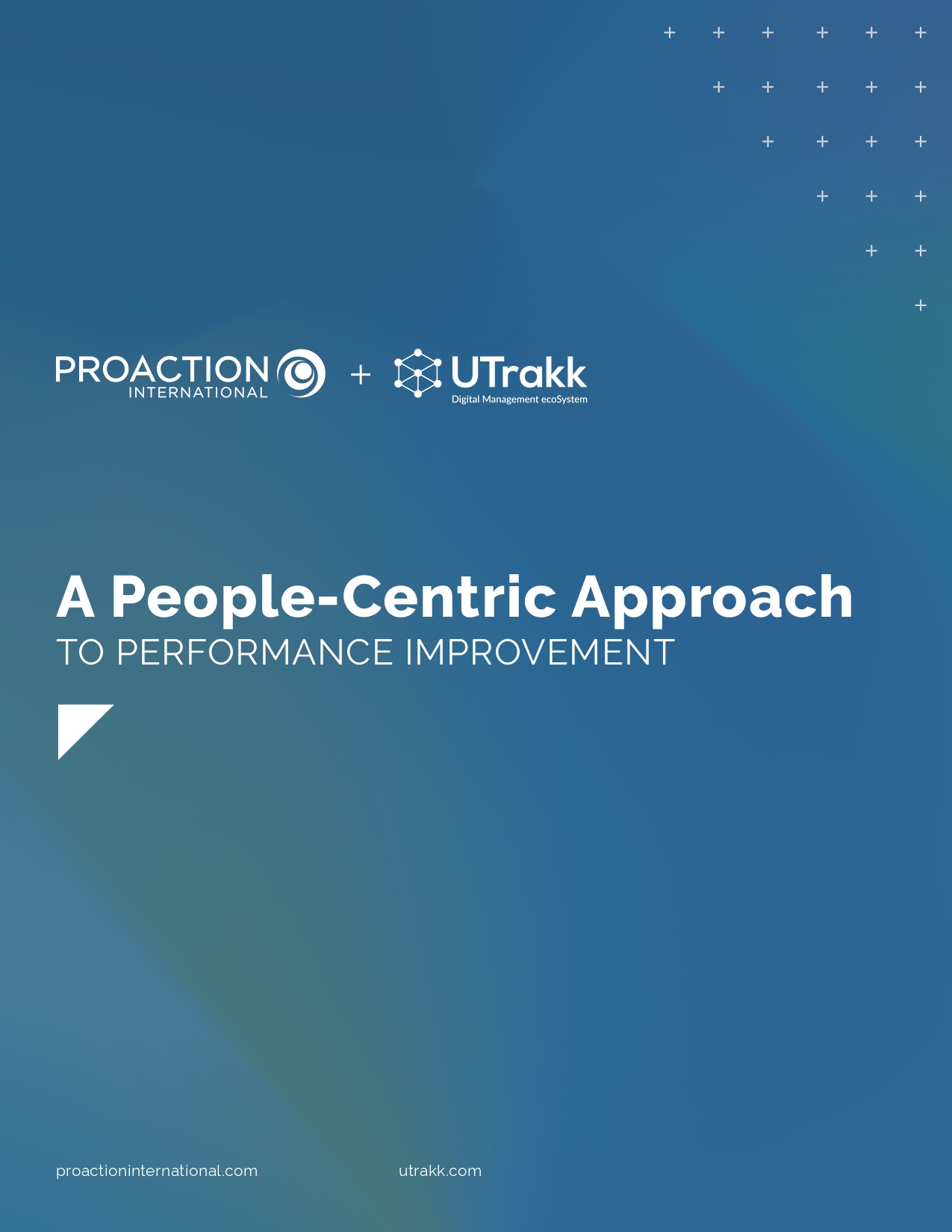What is Lean Management?
Lean Management is a management and work organization philosophy that maximizes customer value while minimizing waste. In other words, this approach identifies and eliminates anything that doesn’t add value.
To achieve this, Lean Management specifically targets seven types of waste: unnecessary transportation, overstock, inefficient movements, waiting times, overproduction, non-value-added operations, and defects.
The goals of Lean Management are to increase profitability, continuously improve, empower employees, and boost customer satisfaction. It focuses on both quantitative aspects (productivity, cost, etc.) and qualitative aspects (working environment, overall satisfaction, etc.) for a holistic approach to performance and operational excellence.
The origins of Lean Management
Lean Management originates from the Toyota Production System (TPS), developed after World War II in Japan by Taiichi Ohno and Eiji Toyoda. Faced with limited resources, the car manufacturer invented a revolutionary method: a “pull” production system, waste elimination, and people-centric processes. This system was based on the rules of Kaizen, quality at the source, and the right quantity (Just-in-Time).
Toyota achieved significant improvements very quickly, inspiring other industries to embrace this method and get spectacular results. The term "Lean" was popularized in the 1990s by James P. Womack, Daniel T. Jones, and Daniel Ross in their books The Machine That Changed the World and Lean Thinking. They describe how the Lean production system pioneered at Toyota evolved into a universal management model applicable beyond the automotive industry (Lean software development, marketing, services, etc.).
Lean Management principles
Lean Management is based on five fundamental principles that provide a framework to streamline the value chain and continuous improvement initiatives within a company. These pillars guide teams in their quest for smooth flows, efficiency, and collective engagement at every step of the process.
Here are the five Lean principles:

1. Identify value
What does the customer demand? What creates real value for them? In Lean Management, value refers to the features of a product or service that directly meet customer needs and expectations – the elements they are willing to pay for.
2. Map the value stream
Value Stream Mapping (VSM) involves identifying all the steps in a production process or service delivery process. It allows organizations to distinguish the activities that create value and eliminate those that don’t. This exercise is a cornerstone of process optimization in Lean Management.
3. Create flow
Work must be organized so that the product or service moves through each step without interruption or delay, ensuring teams’ workflow remains smooth.
4. Establish pull
The company produces based on actual demand, not forecasts. Each production phase begins once the previous one has been completed and the need is confirmed. This pull system ensures that teams deliver only what the customer actually requires, avoiding waste and overproduction.
5. Seek perfection
Through Lean Management, every employee is fully engaged in progressively improving and perfecting their work environment. This shared mindset is the foundation of a continuous improvement culture across the entire organization.
Lean Management tools and methods
Lean Management tools and methods help structure and root the approach into employees’ daily routines. Here are some essential Lean tools for launching continuous improvement initiatives, solving complex problems, and effectively managing tasks and projects:
Kaizen
Kaizen empowers every employee to identify and implement small, incremental improvements that, when combined, create meaningful and lasting impact across the organization. Applicable in every industry, this continuous improvement process promotes involvement and innovation.
PDCA
PDCA (Plan-Do-Check-Act) is a universal project management and problem-solving methodology through which teams plan an action, carry it out, measure results, and adjust as needed. It establishes a continuous learning cycle effective for both agile teams and strategic departments.
Kanban
Kanban involves managing work processes via a dedicated board that indicates the task statuses (for example, To do, In progress, To approve, Completed, etc.). It’s a powerful tool for streamlining workflows and eliminating bottlenecks.
Visual management
Dashboards, displayed KPIs, pictograms, floor markings, collaborative digital tools, visual management makes information accessible by everyone through graphic and physical representations. This dynamic management method promotes shared understanding, helps better align teams, and facilitates decision-making.
Benefits of Lean Management
-
Waste reduction: Lean Management identifies and eliminates all activities that don’t add value for the customer. By eliminating waste, work processes become smoother, faster, and better aligned with actual customer needs.
-
Cost reduction: By optimizing operations and eliminating inefficiencies, Lean Management reduces unnecessary expenses related to inventory, errors, or delays. Such optimal resource management translates into increased profitability.
-
Enhanced productivity and efficiency: With streamlined processes and better work organization, Lean Management enables teams to accomplish more in less time, improving overall performance.
-
Greater autonomy and accountability: Lean Management encourages each employee to take initiatives and solve problems at the source. This helps build confidence, motivation, and engagement within teams.
-
Skills development: By placing continuous improvement at the heart of its practices, Lean Management offers employees multiple opportunities to learn and grow. Training, conversations, and floor experience stimulate professional development, which in turn promotes job satisfaction and well-being.
-
Reduced delivery times: Eliminating unnecessary steps and waiting times makes business processes faster and more responsive. Products and services can thus reach customers more quickly.
-
Better quality products and services: Lean Management focuses on preventing errors rather than correcting them. By involving all employees in identifying quality issues, the approach ensures more reliable products and services that meet expectations.
-
Increased customer satisfaction: The combination of better quality, shorter lead times, and engaged teams improves the overall customer experience. This strengthens loyalty, trust, and brand reputation.
Lean implementations based on industries
Today, Lean Management doesn’t only apply to Japanese automotive factories. It’s become a way of thinking and organizing work that can be adapted to a multitude of companies from different industries.
Lean Manufacturing (industrial and manufacturing environments)
Lean Manufacturing is probably the best-known type of implementation as it’s where the Lean philosophy originates. In factories, this methodology aims to reduce waste (waiting times, excess inventory, unnecessary movement, etc.) and improve quality, while lowering costs. Lean Manufacturing implementation results in smoother production, shorter lead times, and more reliable products.
Lean Software Development (technology)
In technology, the Lean methodology helps optimize software development processes. Often integrated with Agile and DevOps techniques, it enables faster, more efficient feature delivery and helps anticipate bugs to create higher-quality software and achieve greater customer satisfaction.
Lean Healthcare (healthcare)
In hospitals and clinics, the implementation of Lean Management helps streamline the patient journey by reducing waiting times, eliminating duplicate tests, and improving coordination between care teams. The result is faster, safer, and more satisfying care experiences for both patients and healthcare professionals.
Lean Startup (innovation and entrepreneurship)
Popularized by American entrepreneur Eric Ries, Lean Startup allows young businesses to test their ideas quickly, with minimal resources. Rather than investing significant time and money in a product that might not get traction, this approach is about launching a prototype, observing customer feedback, and continuously improving. It reduces risks and accelerates innovation.
Lean Marketing (marketing)
Applying Lean Management to marketing means moving away from big, costly, and static campaigns for a more flexible and responsive approach. Teams can launch a test campaign, measure results in real time with web analytics like open rates, clicks, conversions, etc., and adjust promptly. This enables organizations to invest in what really works and better meet prospect expectations.
How to implement Lean Management in your organization
Implementing Lean Management is a step-by-step approach that requires strategy and daily engagement. Here are the essential steps for a successful Lean implementation:
1. Analyze the current situation
First, analyze the existing situation. The organization must map its business processes (production line, patient journey, sales cycle, software development, etc.) to distinguish value adding activities from wasteful activities.
This phase often involves floor observations through Gemba Walks, team interviews, and KPI analysis. It uncovers inefficiencies that often remain hidden in day-to-day operations.
The diagnosis serves as the foundation for a roadmap, providing the Lean project with a clear path for implementation.
2. Train and engage leaders
Lean requires committed and assertive leadership. Executives and managers must be trained on Lean Management principles and understand their role in managing this change.
Their mission is not only to lead but also to support teams, encourage them to solve problems and experiment with new solutions, and promote a culture of continuous improvement.
This step is critical, as Lean initiatives cannot succeed without active managerial engagement; without it, they risk stalling or losing momentum rapidly.
3. Set continuous improvement routines
Lean Management relies on regularity and collective discipline. To root the approach in daily activities, it’s essential to establish simple but effective rituals:
-
Short, frequent meetings (sometimes called Short Interval Management or SIM) to share progress, bring up issues, and set priorities.
-
Visual management tools (Kanban dashboards, collaborative applications, etc.) to make information clear and accessible to all employees.
-
Dedicated time for sharing ideas, allowing each employee to contribute their perspective and propose improvements.
These practices create a collective dynamic, promote transparency, and allow everyone to actively contribute to progress.
4. Measure, learn, and adjust continuously
Lean Management is a dynamic, evolving approach that requires continuous attention. Regularly measuring results, comparing them against set objectives, and adjusting actions accordingly are essential to sustaining its effectiveness.
Central to this method are feedback loops: implementing a solution, observing its impact, and refining the solution. This iterative cycle of experimentation and learning ensures that Lean remains adaptable and relevant, even in rapidly changing environments.
Combining performance, agility, and people with Lean Management
Lean Management is a universal management tool based on a simple but powerful principle: creating more value with fewer resources, while involving the people who run processes.
Its strength lies precisely in this dual focus: a relentless pursuit of efficiency and performance, coupled with a deep appreciation for the human factor – without which lasting improvement is impossible.
Between new technologies and artificial intelligence, changing worker expectations, and unpredictable markets, organizations can no longer rely on static models if they want to remain competitive. They must learn to constantly adapt, make quick decisions based on reliable information, and involve their teams in implementing sustainable solutions.
The Lean Management system addresses these challenges. In addition to putting people first, it provides a framework for transforming complexity into clarity, uncertainty into agility, and digital pressure into an opportunity for innovation. Whether in an SME, a hospital, a multinational, or a startup, it helps establish a Lean culture where every improvement, however small, creates a virtuous circle of performance, customer satisfaction, and collective engagement.









